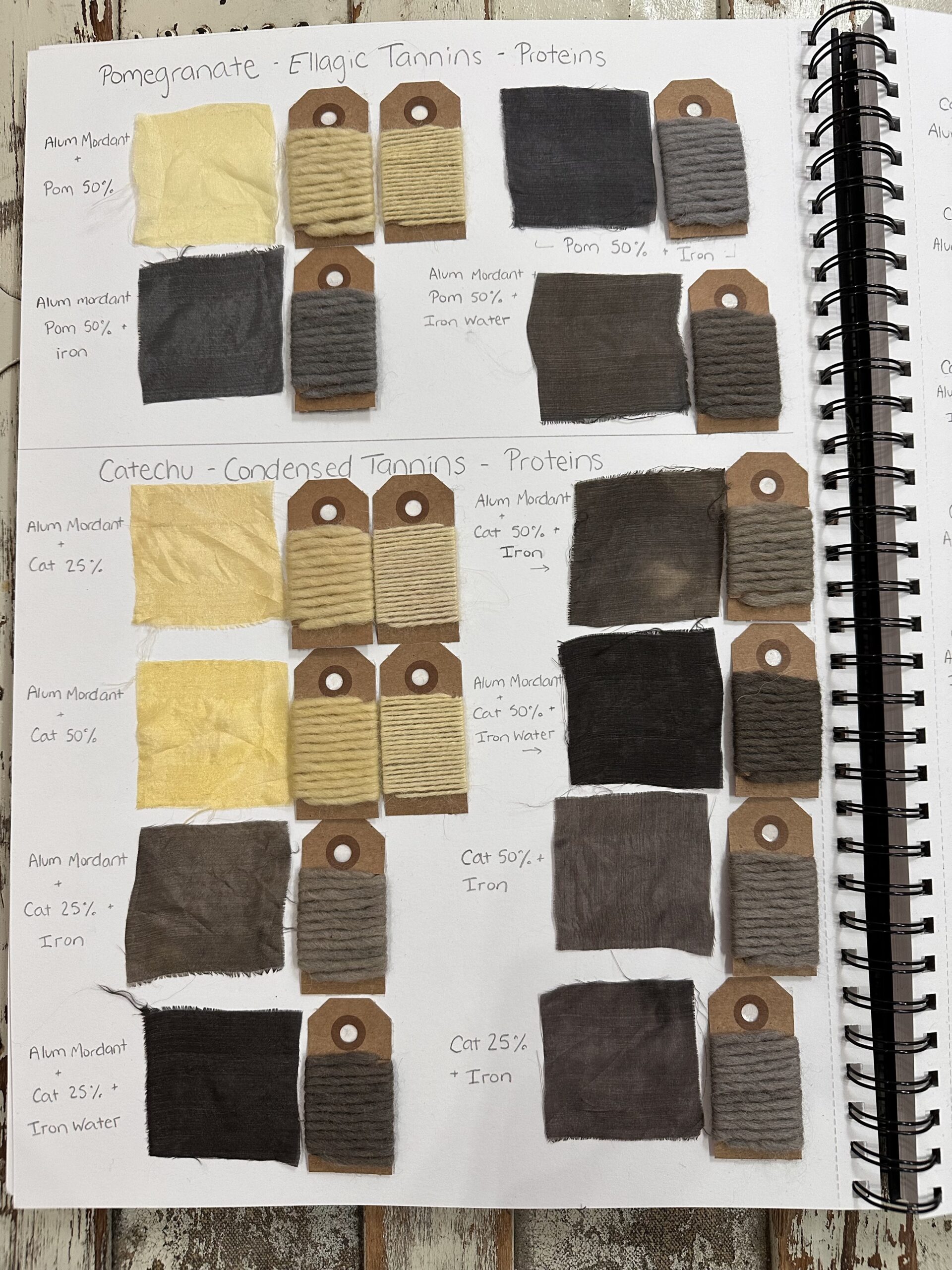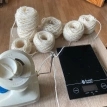Scouring is the term used in the dyeing world for cleaning – but not in the standard ‘bung it in the washing machine’ type of cleaning. When you consider how pernickity natural and historic dyes can be it makes sense that you want to remove as many reasons for your dyeing to go wrong as possible – and dirt and grease are high on that list.
The reason that I am covering animal/protein fibres separately from plant based is because you really do have to treat them differently. Wool in particular can come with a significant amount of “greasy” feeling and even “ready for dyeing” wool could do with a light clean to get rid of trace grease from handling, shipping and so on. Obviously the closer to the wool source the fibres are the more of the natural lanolins are in place, so you need to judge how heavy a scour you believe the fibres need.
You will need: PH neutral soap and a pot you can heat that’s large enough to allow your wool to be completely submerged and float freely.
Optional: Vinegar (I don’t use this personally)
Remember that how you calculate the amount of agents you need – scouring /mordanting/dyeing – is usually calculated as a percentage of your DRY weight of the fibre (WOF). For commercially supplied yarn this is usualy amount 1% (100 grams of fibre = 1 gram of soap) This will go up to 3 or 5% the closer your wool is to coming directly from the sheep (or alpaca etc. I tend to just talk about fibres I use for period dyeing)
Directions:
- Measure out your soap and dissolve it in a small jug or mug of HOT water
- Fill your large pot with room temp water, start to heat on your cooker or gas stove (whatever heat source works for you and your pots), add the dissolved soap from step 1 and stir well
- Add your fibre and bring the temp up slowly – BE Really careful not to agitate the wool too much or let the water get beyond hand hot (or slight more than hand hot, depending on how hot you can stand water really) or it may felt (fibres matting together) – the most the temp should get to is 50 degrees Celsius.
- Hold at this temperature for about a half hour. Rinse in water that is also hot, or again you risk felting because of the change in termperature. Handle the fibres carefully, do not let them tangle or felt. You may need to rinse twice, again matching the temperature of your fibres. You may wish to add a small amount of vinegar to this rinse.
- If you are mordanting or dyeing very soon after they can be stored in a plastic bag wet until they are to be used, otherwise allow to try naturally before storing.


Leave a Reply